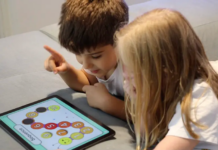By: Annie Pouliot, PhD and Regis Vaillancourt, PharmD
Published in US National Library of Medicine National Institutes of Health
Online, 2016 August 31
Pharmaceuticals play a primary role in the management of most diseases, but medicines also account for 1 of the 3 most common types of adverse health-related events in Canada.1 These medication-related adverse events are “highly” preventable in 37% of cases1 and are often caused by the inappropriate use of medicines, a situation that is linked to a poor understanding of medication instructions and to low levels of health literacy.2–6 In Canada, individuals are encouraged to make healthy lifestyle decisions and to collaborate with the medical team in developing and implementing their treatment plans, but 60% of the adult population lacks the necessary skills to manage their health adequately.7 Pharmacists working in the community, in clinics, and in hospitals have a central role in advising patients on what medications to use and how to use them, answering questions on medications, and assessing patients’ misunderstandings of treatment regimens; as such, they have a role to play in ensuring patients’ understanding of their medication regimens and in ensuring the safe and effective use of medications.
It is well known that patients with low health literacy levels experience great difficulties in accessing the health care system and have poorer health status than patients with higher health literacy levels.4,8 For example, patients with low health literacy levels are often unable to name or describe how to use their current medications, have a limited understanding of their medications and the associated side effects, and are often less likely to ask questions of their pharmacists.9,10 These difficulties in comprehending medication information have been linked to medication errors, misinterpretation of instructions and/or symptoms, poor medication and treatment adherence, lesser self-care behaviour, worse health outcomes, and more visits to the emergency department.8,10–16
Use of the concept of health literacy in the context of pharmacy and medications is not new, but a recent increase in interest has led academics and pharmacists from around the world to use more precise concepts such as “medication literacy”, “pharmacy health literacy”, and “pharmacotherapy literacy”, with or without definition.17–20 According to Raynor, the term “medication literacy” was first used in 2005 in the United Kingdom in an effort to improve the quality of information provided to patients and to advocate for shared responsibility between patients and health care providers in the development of information that is suitable for people with low health literacy levels.21 Most recently, King and others22 surveyed practising pharmacists and academics to formulate a definition of the “pharmacotherapy literacy” concept. On the basis of feedback received from participants, the authors proposed the following definition of pharmacotherapy literacy: “An individual’s capacity to obtain, evaluate, calculate, and comprehend basic information about pharmacotherapy and pharmacy related services necessary to make appropriate medication-related decisions, regardless of the mode of content delivery (e.g. written, oral, visual images and symbols)”.22 This definition appears to be the most complete available thus far.
Although health literacy has been identified as a critical factor affecting communication between health care providers and patients and across the continuum of care, a quick look at the Canadian pharmacy literature and documents developed by national and provincial pharmacy organizations shows a lack of peer-reviewed articles and resources for pharmacists referencing concepts such as “medication literacy”, “pharmacotherapy literacy”, and “pharmacy health literacy”. Moving forward, it is crucial that Canadian pharmacists recognize the health literacy crisis that prevails in Canada and address the medication literacy challenges they may face when dispensing medications or providing drug information and/or counselling to patients. Because pharmacists represent an accessible resource for medication information, they are well situated to assess a patient’s medication literacy and to apply medication literacy tools to ensure proper counselling and the responsible use of medicines.23 Pharmacists should follow guidelines from the International Pharmaceutical Federation’s statement of policy regarding medicines information for patients,24 which recommends both educational aids and oral counselling methods to support medication literacy.
Many authors have also recommended literacy-sensitive techniques, such as the “teach-back” technique, the use of motivational interviews, the “Ask Me 3” program, product demonstrations, and provision of well-designed materials written at the fifth to eighth grade levels; these approaches, if used concurrently, have the potential to increase medication comprehension.2,25–29 Furthermore, when providing information and handouts to patients, pharmacists should focus on the patients’ experience of disease, their desired behaviour, and useful day-to-day drug-related information, as opposed to detailed medical information (see guidance available through the Center for Health Care Strategies Inc; www.chcs.org/). Clear, well-understood pictograms or infographics should be included in the handouts, given that multiple studies have shown the tremendous potential of pictograms in supporting health literacy, if they are well developed and validated.30–38
Pharmacy schools have a responsibility to incorporate medication literacy tools into their programs and to become involved in training the next generation of pharmacists to become effective communicators.39Interventions to enhance pharmacy students’ attitudes when addressing the medication literacy of patients have shown great promise. As highlighted by Baur and Brach,40 effective pharmacy interventions to support medication literacy also need to move beyond improving the usability of spoken and written information, to focus on awareness, action, mobilization, and education of pharmacists.
Source: https://www.ncbi.nlm.nih.gov/pmc/articles/PMC5008434/
Image: https://www.krcu.org/post/health-literacy-month#stream/0
Commment:
The purpose of the article addresses the effects of those who have a lower literacy rate and the implications of such knowledge. For those who with low health literacy rates display difficulties in managing their overall health adequately by not knowing how to identify or pronounce certain medicines, describe specific effects, or even know what questions to ask in relation to prescribed medicines. Causation to such difficulties have stemmed from medication errors, mis-interpretations of instructions, or simply lack of treatment adherence. Therefore, programs set in motion to minimize the present difficulties include “Ask Me 3” and provisions of instructions made to be written to the level of a fifth to eight grade capacity. In doing so, patients can be provided a base line of three (3) questions to ask to better understand what medicine they are taking and why, in addition to simplified verbiage on medication instructions.





I have noticed that the Ask-Me-Three approach has been common in helping patients improve their understanding of their own health literacy in my research.